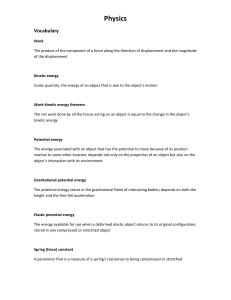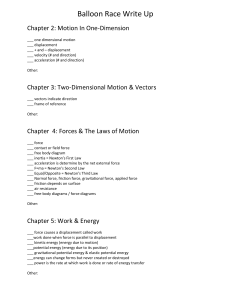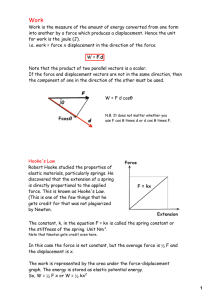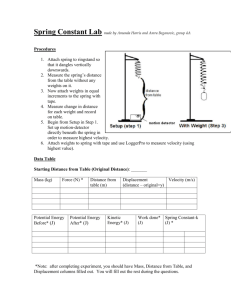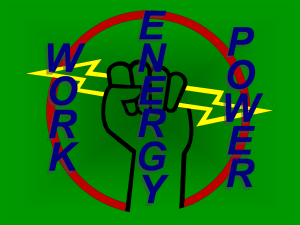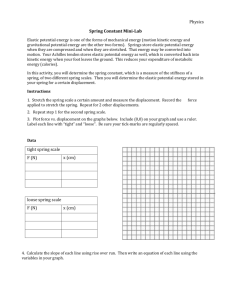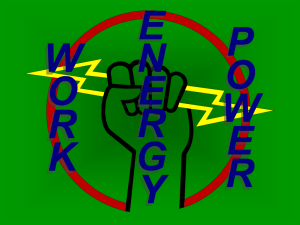Unit 6 Part 3 * Springs and Energy
advertisement
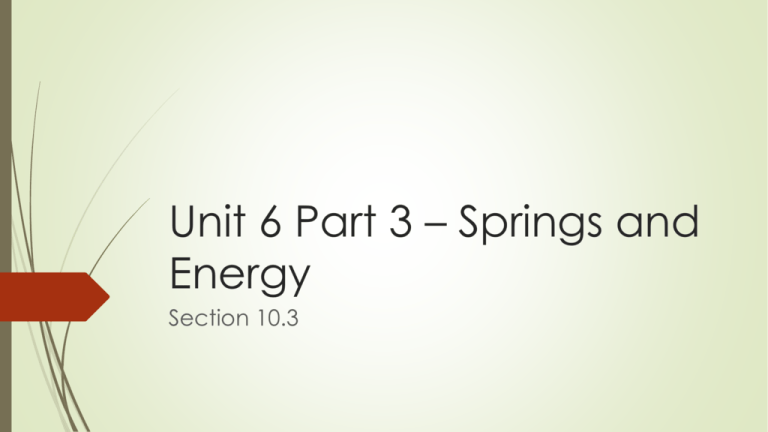
Unit 6 Part 3 – Springs and Energy Section 10.3 Elastic Potential Energy The elastic potential energy is the energy that a spring has by virtue of being stretched or compressed. For an ideal spring: 𝑼𝒔 = 𝟏 𝒌𝒙𝟐 𝟐 (on AP Equation Sheet) So the maximum elastic potential energy occurs when the spring is at its maximum displacement. When the spring is unstretched/uncompressed (at resting/equilibrium position) 𝑈𝑠 = 0. Conservation of Energy Just as we have previously studied, in the case of an ideal spring, energy is conserved. Sample AP Problem Period: is proportional to 𝑚 𝑘 so the period will be greater due to the larger mass. Max Kinetic Energy: since it will be equal to the maximum potential energy, which does NOT depend on mass, it will be the same! Answer: D Sample AP Problem 2 The block has no potential energy, but it will have kinetic energy as it moves back and forth. Without friction, the block/spring system would maintain constant energy, but friction makes it gradually lose energy. Answer: D Calculations with Energy If you know the original/maximum displacement of a spring and the spring constant, you can find the maximum elastic potential energy of the spring. If the spring is just released from rest, this potential energy is equal to the total energy of the system. To find the kinetic energy at any point in the oscillation, find the potential energy and subtract from the total energy. Then you can use our “normal” kinetic energy formula and solve for the speed.

